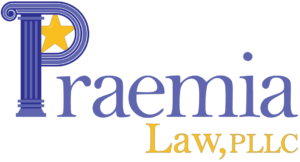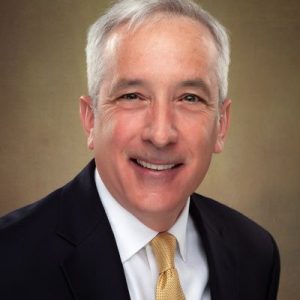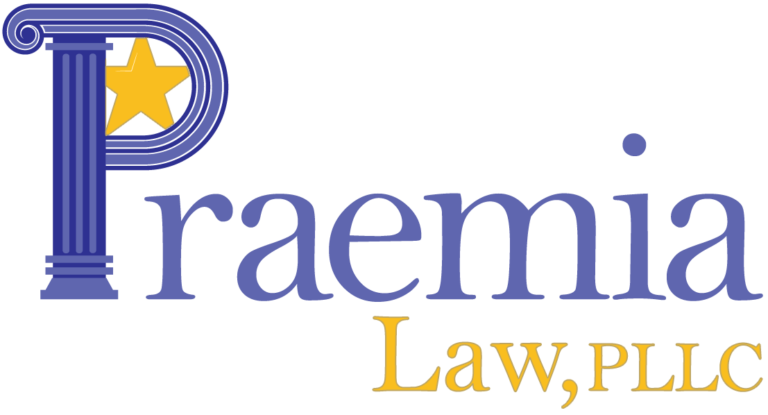Updated September 21, 2020
The “Families First Coronavirus Response Act,” which President Donald J. Trump signed into law on March 18, 2020, provides major, temporary expansion of leave entitlements under federal law. The Act includes new bases for employees to obtain paid and unpaid leave for COVID-19-based reasons. The Department of Labor issued a temporary rule implementing the new entitlements, effective April 1, 2020, which are set to expire on December 31, 2020. On September 11, 2020, the Department issued revisions to the temporary rule, effective September 16, 2020.
Emergency Family and Medical Leave Expansion Act (“Emergency FMLEA”)
The Emergency FMLEA amended the Family and Medical Leave Act of 1993 (“FMLA”) to include new provisions under which an eligible employee is entitled to 12 workweeks of leave during any 12-month period because of a “qualifying need related to a public health emergency.”
The new basis for leave under the FMLA provides leave to an eligible employee of a covered employer when the employee is unable to work (or telework) due to a need for leave to care for the son or daughter under 18 years of age of such employee if the school or place of care has been closed, or the child care provider of such son or daughter is unavailable, due to a public health emergency.
A “public health emergency” means an emergency with respect to COVID–19 declared by a federal, state, or local authority. A “child care provider” is one who is compensated for providing child care services on a regular basis. Under the statute, a “school” is an elementary school or secondary school, as defined by federal law.
Covered Employers. The coverage of the Emergency FMLEA is significantly different than the traditional FMLA, which applies to employers who employ 50 or more employees for specified periods. The Emergency FMLEA covers employers with fewer than 500 employees.
Covered Employees. The Emergency FMLEA’s coverage as to employees is also broader. Traditional FMLA leave under the 1993 enactment is available for employees who have been employed for at least 12 months by the employer with respect to whom leave is requested and for at least 1,250 hours of service with such employer during the previous 12-month period. In contrast, the Emergency FMLEA applies to employees who have been employed for at least 30 calendar days by the employer.
Paid and Unpaid Leave. The Emergency FMLEA permits employers to make the first 10 days of public health emergency leave unpaid. The statute also requires covered employers to provide paid, public health emergency leave after the initial period of 10 days of unpaid leave.
Calculation of the Paid Leave. The paid leave under the Emergency FMLEA must be calculated based on an amount that is not less than two-thirds of an employee’s regular rate of pay (under the Fair Labor Standards Act) and the number of hours the employee otherwise would be normally scheduled to work (or the number of hours calculated for employees who have varying schedules). The statute provides a specific method for calculating the hours of employees whose schedules vary from week to week. In any event, the Emergency FMLEA caps the paid leave payable to an eligible employee at $200 per day and $10,000 in the aggregate.
Employees’ Notice of Need for Leave. If the need for public health emergency leave is foreseeable, then the employee is required to give his or her employer “such notice as is practicable,” according to the Emergency FMLEA.
Documentation of Need for Leave. Employees taking leave under FMLEA are required to provide the employer documentation along with a signed statement with information on: (1) The employee’s name; (2) the date(s) for which leave is requested; (3) the COVID–19 qualifying reason for leave; and (4) a statement representing that the employee is unable to work or telework because of the COVID–19 qualifying reason. In addition, if the employee is caring for a son or daughter of the employee if the school or place of care of the son or daughter has been closed, or the child care provider of such son or daughter is unavailable, due to COVID–19 precautions, the employee must provide to the employer the following information: (1) the name of the son or daughter being cared for; 2) the name of the school, place of care, or child care provider that has closed or become unavailable; and (3) a representation that no other suitable person will be caring for the son or daughter during the period for which the dmployee takes paid sick leave.
In the Department of Labor’s revisions to the temporary rule, the Department clarified that the documentation the employee is to provide need not be given ‘‘prior to’’ taking FMLEA leave, but rather may be given as soon as practicable, which in most cases will be when the employee provides his or her notice.
Restoration to Position. The FMLA’s requirement that an employee on leave be restored to his or her position or to an equivalent position with equivalent benefits, pay, and other terms and conditions of employment is more limited under the Emergency FMLEA. Specifically, under the Emergency FMLEA, an employee’s job-restoration rights after public health emergency leave do not apply to an employee of an employer who employs fewer than 25 employees if certain conditions are met. The conditions are the following:
- The employee takes public health emergency leave;
- The position held by the employee when the leave commenced does not exist due to economic conditions or other changes in operating conditions of the employer that affect employment; and are caused by a public health emergency during the period of leave;
- The employer makes reasonable efforts to restore the employee to a position equivalent to the position the employee held when the leave commenced, with equivalent employment benefits, pay, and other terms and conditions of employment; and
- If the reasonable efforts of the employer fail, the employer makes reasonable efforts during a recall period to contact the employee if an equivalent position becomes available. The recall period is the one-year period beginning on the earlier of (A) the date on which the qualifying need related to a public health emergency concludes; or (B) the date that is 12 weeks after the date on which the employee’s public health emergency leave commences.
Interaction with Other FMLA Leave. While the Emergency FMLEA provides a new basis for leave, it does not expand the 12-week maximum in a 12-month period that applies to all types of FMLA leave (other than covered servicemember family leave). As a result, if an eligible employee has taken FMLA leave for other qualified reasons under the 12-month leave year, then the maximum 12 weeks of public health emergency leave will be reduced by the amount of qualified FMLA leave already taken in the leave year.
Watch for DOL Action in the Future. The Families First Coronavirus Response Act permits the United States Secretary of Labor to exclude certain health care providers and emergency responders from the definition of “eligible employee.” In the Department of Labor’s revisions to the temporary rule, the Department revised the definition of a “health care provider” to focus less on the identity of the employer and more on the skills, role, duties, or capabilities of the employee. The intent of the revision generally is to narrow the exclusion of health care personnel from coverage by requiring that the health care employee be capable of providing, and employed to provide, diagnostic, preventative, or treatment services or services that are integrated with, and necessary to, diagnostic, preventative, or treatment services and, if not provided, would adversely impact patient care.
The Act also permits the Secretary of Labor to exempt small businesses with fewer than 50 employees when the imposition of such requirements would jeopardize the viability of the business as a going concern. Keep an eye out for any announcements from the Department of Labor on these points.
Emergency Paid Sick Leave Act (“EPSLA”)
The EPSLA requires covered employers to provide to each employee employed by the employer paid sick time to the extent that the employee is unable to work (or telework) due to a need for leave because:
- The employee is subject to a federal, state, or local quarantine or isolation order related to COVID–19;
- The employee has been advised by a health care provider to self-quarantine due to concerns related to COVID–19;
- The employee is experiencing symptoms of COVID–19 and seeking a medical diagnosis;
- The employee is caring for an individual who is subject to a federal, state, or local quarantine or isolation order, or has been advised by a health care provider to self-quarantine due to concerns related to COVID–19;
- The employee is caring for a son or daughter of such employee if the school or place of care of the son or daughter has been closed, or the child care provider of such son or daughter is unavailable, due to COVID–19 precautions; and
- The employee is experiencing any other substantially similar condition specified by the Secretary of Health and Human Services in consultation with the Secretary of the Treasury and the Secretary of Labor.
The EPSLA permits an employer of an employee who is a health care provider or an emergency responder to elect to exclude such employee from the paid sick leave requirement. As discussed above, the Department of Labor revised the permitted exclusion to clarify that it is limited to health care personnel capable of providing, and employed to provide, diagnostic, preventative, or treatment services or services that are integrated with and necessary to diagnostic, preventative, or treatment services and, if not provided, would adversely impact patient care.
Covered Employers. The EPSLA covers nearly all smaller, private employers. With respect to private employers, the EPSLA covers all persons engaged in commerce or in any industry or activity affecting commerce that employ fewer than 500 employees, and specifically includes as covered employers individuals acting directly or indirectly in the interest of an employer in relation to an employee.
Covered Employees. The EPSLA covers all employees of covered employers regardless of how long an employee has been employed.
Calculation of Paid Sick Time; Carryover. The paid sick time to which an employee is entitled varies, depending on whether the employee is full-time or part-time and the purpose of the leave. Full-time employees are entitled to 80 hours, and part-time employees are entitled to a number of hours equal to the number of hours that such employee works, on average, over a 2-week period. The statute provides a specific method for calculating the hours of employees whose schedules vary from week to week. Paid sick time under the EPSLA is not required to carry over from one year to the next.
Required Compensation. The EPSLA requires the paid sick time be paid at a rate calculated based on the rate that is the greater of:
- The employee’s regular rate of pay under the Fair Labor Standards Act (“FLSA”);
- The applicable minimum wage rate under the FLSA; and
- The applicable minimum wage rate under applicable state or local law,
except that the employee’s required compensation need be only two-thirds of the applicable rate with respect to certain uses of the paid sick time. Specifically, the two-thirds multiplier applies to leave because the employee:
- is caring for an individual who is subject to a quarantine or isolation order or advised by a health care provider to self-quarantine due to COVID-19 concerns;
- is caring for a son or daughter of the employee if the school or place of care of the son or daughter has been closed, or the child care provider of such son or daughter is unavailable, due to COVID–19 precautions; or
- is experiencing any other substantially similar condition specified by the Secretary of Health and Human Services (“HHS”).
Caps on Paid Sick Time. The employer’s obligation to pay sick time under the EPSLA is capped at $511 per day and $5,110 in the aggregate for a use based on the employee’s own need, i.e., because the employee is subject to a quarantine or isolation order, advised by a health care provider to self-quarantine due to COVID-19 concerns, or experiencing symptoms of COVID-19 and seeking a medical diagnosis. The cap is set at $200 per day and $2,000 in the aggregate for paid sick time for others’ needs and in cases of the employee’s own need because of a substantially similar condition. Specifically, the lower cap applies if the employee is:
- caring for an individual who is subject to a quarantine or isolation order or advised by a health care provider to self-quarantine due to COVID-19 concerns;
- caring for a son or daughter of the employee if the school or place of care of the son or daughter has been closed, or the child care provider of such son or daughter is unavailable, due to COVID–19 precautions; or
- experiencing any other substantially similar condition specified by HHS.
Employers are not required to pay out any unused sick time upon the termination of the employee’s employment due to resignation, involuntary termination, retirement, or other separation.
Employees’ Notice of Need for Leave. After the first workday (or portion thereof) an employee receives paid sick time under the EPSLA, an employer may require the employee to follow reasonable notice procedures in order to continue receiving such paid sick time.
Documentation of Need for Leave. Employees taking leave under the EPSLA are required to provide to the employer documentation along with a signed statement with information on: (1) the employee’s name; (2) the date(s) for which leave is requested; (3) the COVID–19 qualifying reason for leave; and (4) a statement representing that the employee is unable to work or telework because of the COVID–19 qualifying reason.
In addition, employees must provide employers with the following information based on the type of EPSLA the employee is taking:
- If the employee is subject to a federal, state, or local quarantine or isolation order related to COVID–19, the employee must additionally provide to the employer the name of the government entity that issued the Quarantine or Isolation Order.
- If the employee has been advised by a health care provider to self-quarantine due to concerns related to COVID–19, the employee must additionally provide to the employer the name of the health care provider who advised the employee to self-quarantine due to concerns related to COVID–19.
- If the employee is caring for an individual who is subject to a federal, state, or local quarantine or isolation order, or has been advised by a health care provider to self-quarantine due to concerns related to COVID–19, the employee must additionally provide to the employer either: (1) the name of the government entity that issued the Quarantine or Isolation Order to which the individual being cared for is subject; or (2) the name of the health care provider who advised the individual to self-quarantine due to concerns related to COVID–19.
- If the employee is caring for a son or daughter of the employee due to the closure of the school or place of care of the son or daughter or the unavailability of his or her child care provider due to COVID–19 precautions, the employee must also provide (1) the name of the son or daughter being cared for; 2) the name of the school, place of care, or child care provider that has closed or become unavailable; and (3) a representation that no other suitable person will be caring for the son or daughter during the period for which the employee takes paid sick leave.
In the Department of Labor’s revisions to the temporary rule, the Department clarified that the documentation the employee is to provide need not be given ‘‘prior to’’ taking paid sick leave, but rather may be given as soon as practicable, which in most cases will be when the employee provides notice of his or her need for leave.
Interaction with Other Leave. Employers may not require the employee to use other paid leave provided by the employer before the employee uses paid sick leave under the EPSLA.
When the Obligation Ends. An employer’s obligation to pay sick time to an employee under the EPSLA ends after the employer has met its obligation to pay the equivalent of 80 hours of work or with the beginning of the employee’s next scheduled shift immediately following the termination of the need for paid sick leave under the EPSLA.
No FMLEA or EPSLA Leave if There is No Work for the Employee to Perform. In its revisions to the temporary rule, the Department of Labor reaffirmed that an employee may take paid sick leave or expanded family and medical leave only to the extent that any qualifying reason is a but-for cause of his or her inability to work.
New Notice-Posting Requirement under Emergency FMLEA and EPSLA. Employers are required to notify employees of the provisions of the Emergency FMLEA and the EPSLA by posting a notice where the employer typically posts notices to employees. The Department of Labor has issued a form notice, which can be obtained here.
Payroll Tax Credits for Paid Leave under Emergency FMLEA and EPSLA. The Families First Coronavirus Response Act provides for payroll tax credits to reimburse employers for paid leave under the Emergency FMLEA and the paid sick time under the EPSLA. Covered employers should consult their tax advisers for tax advice.
Timothy M. McConville is President of Praemia Law, PLLC. He has years of experience providing labor and employment law counsel to employers ranging from small entities to Fortune 500 companies with thousands of employees. Timothy.McConville@praemialaw.com; 703-399-3603, ext. 1; www.praemialaw.com.
This article is for general informational purposes only and should not be relied upon or regarded as legal advice. Please consult a qualified, licensed attorney, authorized to practice law in the relevant jurisdiction, concerning particular facts and circumstances.


